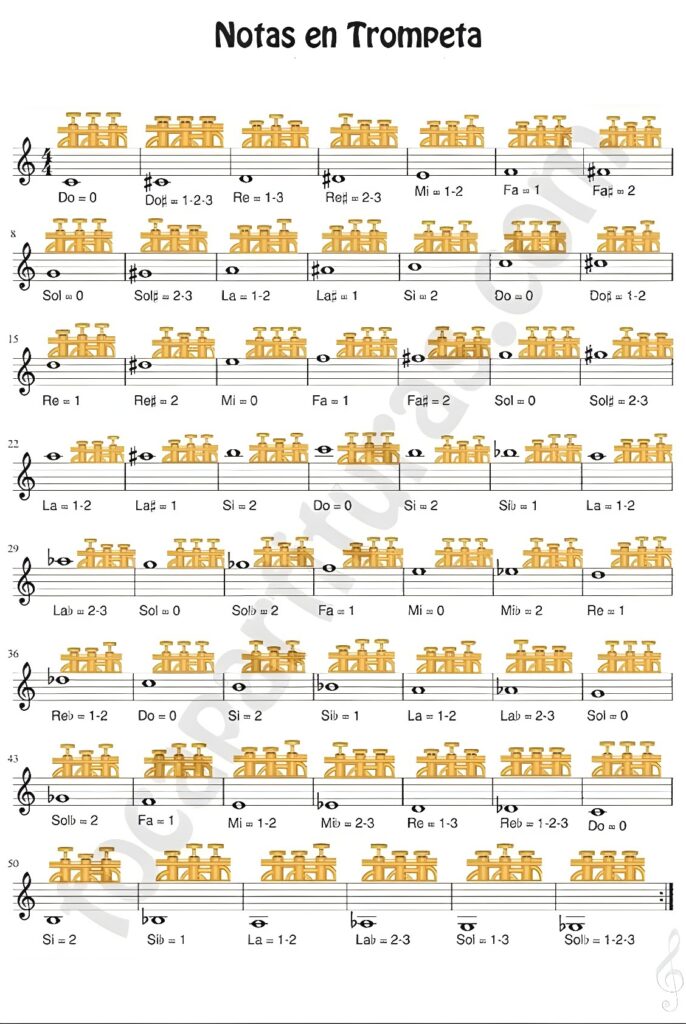Learning the trumpet is an exciting and rewarding experience, but it can also be a bit challenging, especially when it comes to mastering the different fingerings. Understanding the trumpet fingering chart is essential for playing notes accurately and with confidence. This guide will help you get acquainted with the trumpet fingering chart and offer some tips to make your practice sessions more effective.
Understanding the Trumpet Fingering Chart
A trumpet has three valves, and the combinations of these valves produce different notes. The trumpet fingering chart shows which valves to press for each note in both the lower and higher registers.
Here’s a basic overview of the standard trumpet fingering chart for the notes in the middle register:
| Note | Fingering |
|---|---|
| C | Open |
| D | 1 and 3 |
| E | 1 and 2 |
| F | 1 |
| G | Open |
| A | 1 and 2 |
| B | 2 |
| C’ | Open |
Valve Combinations
- Open (0): No valves pressed.
- 1: First valve pressed.
- 2: Second valve pressed.
- 3: Third valve pressed.
- 1 and 2: First and second valves pressed together.
- 1 and 3: First and third valves pressed together.
- 2 and 3: Second and third valves pressed together.
- 1, 2, and 3: All three valves pressed together.
Practicing with the Fingering Chart
- Start Slow: Begin by practicing the notes slowly. Play each note clearly and hold it for a few seconds to ensure you are using the correct fingering and producing a clean sound.
- Use a Metronome: Incorporating a metronome into your practice sessions can help you maintain a consistent tempo. Start with a slow tempo and gradually increase the speed as you become more comfortable with the fingerings.
- Practice Scales: Scales are a great way to get used to different fingerings and improve your overall technique. Start with the C major scale and gradually move to other scales as you progress.
- Play Simple Songs: Apply your knowledge by playing simple songs that use the notes you’ve practiced. This will make your practice sessions more enjoyable and help you understand how the notes fit together in a musical context.
- Consistent Practice: Regular practice is key to mastering the trumpet. Aim to practice daily, even if it’s just for a short period. Consistency will help you build muscle memory and improve your finger coordination.
Advanced Fingering Tips
- Alternate Fingerings: Some notes can be played with different fingerings. Experiment with alternate fingerings to find which ones produce the best tone and are most comfortable for you.
- Lip Flexibility: Work on your lip flexibility exercises to help with transitions between notes and improve your range.
- Use a Tuner: A tuner can help you ensure that each note you play is in tune. This is especially important for beginners who are still developing their ear for pitch.


Conclusion
Mastering the trumpet fingering chart is an essential step in becoming a proficient trumpet player. By familiarizing yourself with the basic fingerings, practicing consistently, and applying what you learn to scales and songs, you will build a solid foundation for your trumpet playing. Remember to be patient with yourself and enjoy the process of learning this wonderful instrument. Happy playing!

